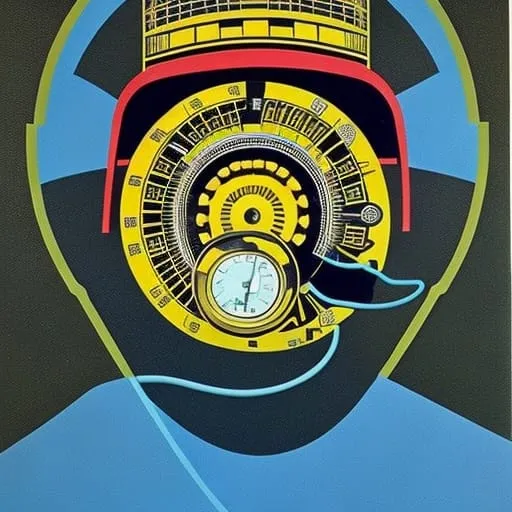I’m looking for advice on how to get started with a NAS, probably Synology since it’s beginner friendly and often well recommended. I’m thinking of a 2 bay case with 2x4TB HDDs in RAID1 setup. What do I have to look out for in a device to get the best bang for my bucks?
My use case:
I have various documents, software projects, family pictures, videos that I want to store on something more reliable than a bunch of internal/external HDDs or USB sticks. I have a full *arr stack and jellyfin but I want to move these to my “server” laptop and docker once NAS is setup, and then host the files on it. For projects I might want to self-host gitea down the line.
Some more specific questions:
- if I go with a 2 bay NAS case, can i also connect my old external drive to it as a separate drive, can they handle USB3 drives? Will it require reformatting since it was used on windows so far?
- are there any issues with connecting docker
drivesvolumes to a NAS? - noise issues - does the NAS itself make a noticeable amount of noise or is it just the drives?
- whats the life expectancy of a NAS? if it dies, can I just plug the drives into a new one?
- does syncthing work well with a NAS or is there a better way of syncing local files to the NAS for backup?
Sorry for the question dump, just wanted to cover as many possible issues as possible 😅
- Yes, but NTFS is a bad filesystem, so I would format it anyways.
- What are docker drives? Docker works on any normal Linux distro. Some commercial NAS are *BSD based though and there you need to use some ugly workarounds.
- Usually the fans make the most noise as NAS cases are optimized for heavy drive use and thus use a lot of ventilation. If you are a typical home user you might be better off repurposing a small form factor quiet media PC, but look for one that can fit the drives you want.
- Same as a regular PC. If the NAS is using standard software raid or btrfs/zfs then yes, with hardware raid no (avoid!).
- There are many different ways with different pro and cons. It really depends on what you want.
Docker works with a hell of a lot more than just Linux
Synology or QNAP will do the trick. However, once you get into the self-hosted rabbit hole, they’ll become insufficient pretty quickly. My suggestion it’s to start with a self-built right with a Ryzen 5 or 7, enough RAM (16GB should suffice at first) and take it from there. That way you have flexibility in terms of what hardware (disks, ram, processor, board, power supply, cooling, etc) and its usually very cost effective in terms of bang-for-the-buck. You can then test OMV, or Ubuntu server, or TrueNAS or anything else, and find your favorite. There are plenty of cases that can meet those needs without breaking the bank.
+1 for QNAP, mine is great
-1 because of Qlocker
I disagree with this. I have managed to get by quite well with my 4-bay Synology for over five years. They still even provide updates for it. That said, most of the “work” is done on a server of its own accord, and not on the NAS.
I don’t foresee a need to upgrade outside of disk replacements for storage for another few years, by that time it may be time for 10GigE at home and then, we can talk upgrade.
I guess I misspoke. It became insufficient for me rather quickly. When I started to find new platforms that would allow me to replace the data-hogs out there by self-hosting, any of those devices would have trouble keeping up. I went the so-called “overkill” route and made sure what I built could handle at least double my needs in terms of power, performance and storage capacity. After all this time I have yet to see my processor reach over 20% utilization and my RAM hasn’t hit 25% even once. At the end of the day, we all need to make our own choices. I’m actually glad that your synology has worked so good for you, seriously. After all, it is an investment.
I didn’t see this mentioned so apologies if this is a duplicate, but keep in mind that for your *arr stack you will run into issues if you try to keep the config files on the NAS instead of stored locally to the server they run on. Radarr and Sonarr both use sqlite which does NOT like networked file storage due to the way it handles locking files. You can store the media that they handle on your new NAS just fine though!
Maybe this is an incredibly dumb question, but I was actually doing research on a very similar question to the OP and I still don’t really have a definitive answer.
I currently have a series of docker containers running Plex and the full *arr setup on the Linux drive of my PC. Because I dual boot my machine, I want to migrate my server to a NAS so I don’t shut it down whenever I switch from Linux to Windows. I’m seeing that I could theoretically use a NAS just for the media storage and keep all the transcoding (ie all of the docker containers with sonarr, radarr etc) on the existing Linux drive. However, would the Plex container live on the NAS or the Linux drive? I’d assume the NAS…?
Not a dumb question at all! It can take some time to really wrap your head around this stuff
If you want Plex to be able to serve media all the time (even when your main PC is off or you’re switching between your Linux and Windows installs) then you’d have to run it on the NAS. You may be able to keep the *arr stack on your Linux drive if you don’t care about uptime, since these programs really only need to run when you need media files managed. That being said, you might find it more simple to manage if you migrate all your workloads to the NAS
I currently have Plex running as an “app” on my TrueNAS SCALE NAS, which is just what they call containers/deployments. It runs very well, and I was even able to pass though a GPU for transcoding
@Kaldo
Syno DS224+. Good bang vs. buck. Decent speed, decent features (iGPU, Docker, VMs).
My only gripe(s): only 2 USB ports, no built-in 2.5 GbE (possible via USB and 3rd party driver) and Synology’s limited list of “approved” HDDs.- Yes. If your HDD is formatted as NTFS or exFAT, no reformat _should_ be necessary.
- What do you mean by docker drives?
- Mainly the drives.
- My DS216+II runs 24/7 for 7 years now without hiccup (but, obvisously, YMMV). DSM supports drive migration.
gummibando@mastodon.social
Sorry, with ‘docker drives’ I meant ‘docker volumes or bind mounts’. I dont have a lot of experience with it yet so I’m not sure if I’m going to run into problems by mapping them directly to a NAS, or if I should have local copies of data and then rsync / syncthing them into the NAS. I heard you can theoretically even run docker on the NAS but not sure if that’s a good idea in terms of its longevity or performance.Is the list of “approved HDDs” just a marketing/support thing or does it actually affect performance?
Thanks for the answers! The DS2xx series looks like something I could start with. DS223 is a bit cheaper and has 3 USB ports so that could be useful, I’d guess I don’t need to focus on performance since it’s mostly just for personal data storage and not some intensive professional work.
@Kaldo It’s a support thing. Maybe even consider Syno’s “own” HAT3300 HDDs. 4TB has an ok price, at least where I live.
You can run Docker on a Syno NAS via DSMs Container Manager package perfectly fine, as I do.
Keep in mind, the DS233 has an ARM CPU with less “grunt” vs. the 224+'s Intel CPU and can not be expanded beyond the soldered-on 2 GB RAM.
But, while it has been a backup device/test mule for years now, I used to run Docker containers on the DS216+II even with a meager 1 GB of RAM.Could be a regional thing but Synology HDDs are around 30% more expensive than ‘normal’ WD/Seagate/Toshiba that I’m seeing at first glance. Maybe it does make it up for quality and longevity but afaik HDDs are pretty durable if they are maintained well, and I imagine them being in RAID1 should be good enough security measure?
Considering the price of the diskstation itself it’s all quickly adding up to a price of a standalone PC so i’m trying to keep it simple since it’s for a relatively low performance environment.
My only gripe(s): only 2 USB ports
I have a DS2422+ and even that only has 2 USB ports. But you can expand them with a USB-hub. I had 5 external drives connected over a single port without issues.
Synology’s limited list of “approved” HDDs.
You can use this script and put it as a scheudeled task “on boot”. It will automatically add all your harddrives to the list of verified drives, disabling all warnings and errors with it.
Acronyms, initialisms, abbreviations, contractions, and other phrases which expand to something larger, that I’ve seen in this thread:
Fewer Letters More Letters LVM (Linux) Logical Volume Manager for filesystem mapping NAS Network-Attached Storage Plex Brand of media server package RAID Redundant Array of Independent Disks for mass storage ZFS Solaris/Linux filesystem focusing on data integrity
5 acronyms in this thread; the most compressed thread commented on today has 15 acronyms.
[Thread #553 for this sub, first seen 28th Feb 2024, 04:05] [FAQ] [Full list] [Contact] [Source code]
Good bot
My first real NAS was a Synology 920+, which I’m still using after several years. I knew nothing about NAS’, and it’s been amazing!
I’m self-hosting numerous applications via docker; have replaced quite a few paid services (google drive, Evernote, etc.); and it’s already come in handy to retrieve deleted documents from my wife’s computer (several times!), which we back up to the NAS.
My only real suggestion is to go with as many bays as possible. Mine is a 4-bay, and I’ve already filled AND upgraded the capacity of several drives. I wish I had gone with 6 or 8 bays, but I really had no idea that my NAS would be this versatile.
I do also have an 4-bay external HDD enclosure, but it only serves to make local backups of my NAS. I see my NAS as the main hub, and place for ALL of my data, so external drives are either feeding data to my NAS or storing backups.
- I connect HDDs and even an action camera to the USB port when I need to make backups of my NAS, or to copy data into my NAS. I haven’t needed to reformat anything just to work with the NAS.
- my docker use is pretty basic: rss aggregator, podcast storage, bookmark storage, etc.
- Drives don’t make any noise, other than the typical “HDD read/write” noise that you’d get from a spinning HDD. The fan can be adjusted to different levels, and rarely do I ever notice them.
- I expect any NAS to last as long as a typical desktop computer: at least 10 years. Drives can be swapped out and replaced when needed, but this is far easier to do the more bays you have, since you’ll have redundancy in at least one other drive. Theoretically, I can lose an entire drive and not lose any data. In fact, even upgrading a drive is very seamless, and the data gets rebuilt into the new drive. Pretty cool stuff.
- I don’t use syncthing. On my computers, I’ll sync/backup local files to the NAS using Synology drive. On my phone, I have Synology Photos backing up photos and videos, and Synology Drive backing up my “documents” folder. I do also use SMBSync2 (Android) to copy music files from my NAS to my phone, so I can listen offline.
I’m self-hosting numerous applications via docker; have replaced quite a few paid services (google drive, Evernote, etc.)
What Evernote alternative are you self hosting?
I’m looking for one myself, but it needs to have a top notch search engine and web capture.
In all honestly, I migrated all my Evernote data to Synology Notes.
I do still use Synology Notes, however, I’ve also made it a point to separate certain things like receipts (something I used Evernote for) to plain PDF files organized in a file folder structure for better data portability.
Synology global search is pretty great, so it will read inside of PDF documents, and I haven’t had any issues with finding large amounts of data when needed.
I do miss Evernote, but I got sick and tired of their constantly increasing prices and making their software worse. And I used Evernote from the very beginning… even got a shirt! But self-hosting, while adding a few extra hoops to jump through to get working, is the best thing ever.
That’s the real issue I have with any note taking software is the data portability or lack of. Even Synology Notes will be a challenge to migrate away from (if I ever do), so anything that doesn’t need to go there gets put somewhere else! But Notes has been seamless to use and “just works” for my needs.
First things first: Synology as a beginner NAS is perfect! It’s what I recommend to everyone that is getting started out. So good move there.
I think you should get a four-bay NAS. You don’t have to put four drives in it; you can put two drives in it and have an upgrade path for later. Plus the drives are far easier to install and remove. The processor will also be better in a four-bay NAS, which will give you more options if you want to play around with a docker container or run a VM.
To answer your questions:
- If the NAS you choose has a USB port on it, you will be able to connect things like external hard drives, thumb drives, etc. NASes with USB3 connectors support USB 3 drives. Just be sure to use a file system that is not proprietary. So NTFS is out, but exFat is fine.
- I have connected to volumes on the NAS and have connected the NAS to other volumes without issues. It will work fine.
- I had two NASes sitting right next to my head in my office at ear level — probably the worst case scenario for noise. I barely noticed them. I could hear them crunching away during backups, but it wasn’t bad. I never heard a fan running — just the internal drives making their read/write noises.
- The drives fail before the NASes do. Synology had some issues with bult-in power supplies going bad after a few years. Their modern NASes now have plugs with a power brick on the cable, which I assume was in response to this issue. It’s a lot less expensive to replace a power cable than a whole NAS! But beyond that one issue (which affected one NAS of mine), the NASes I’ve been using have lasted for … oh, 8 years now.
- There are many choices for syncing data with your synology NAS. They provide Synology Drive, which gives you a local drop-box-like folder syncing option. They support rsync, and they provide HyperBackup, which is a block-level backup utility. You can choose a Synology shared drive as the destination for a Time Machine backup on a Mac. (I assume you can do this with Windows’ backup solution, but I’ve never personally used it.)
I have a 2 bay synology nas as well. I fucking love how easy it was to set up following guides online like from Marius Hosting (I gotta donate to that guy). Everything works perfectly from Adguard, Jellyfin, syno photos, etc. As I progress, the next nas I might make it myself but for now, the Synology nas is amazing.







